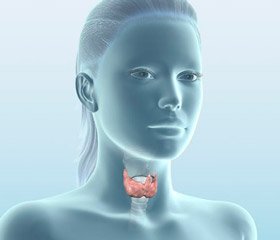Журнал «Здоровье ребенка» (62) 2015. Тематический выпуск "Детская гастроэнтерология"
Вернуться к номеру
Diseases of the digestive system organs in the structure of somatic pathology in adolescents with nontoxic diffuse goiter
Авторы: S.I. Turchina, O.I.Plekhova, G.V. Kosovtsova, O.V. Varodova, T.P. Kostenko , B.V.Bannikov
SI «Institute for Children and Adolescents Health Care of the NAMS of Ukraine», Kharkiv
Рубрики: Педиатрия/Неонатология
Разделы: Клинические исследования
Версия для печати
Background and aim. Current research suggests convincingly that there is a close relationship between the state of somatic health of the child and the thyroid gland (TG) pathology. The combination of the most common diseases can be both occasional and brought about by cause- and- effect relationship, the definition of which is important to improve medical care of the population. Pathology of the digestive system organs is almost 2,5 times more frequent in schoolchildren with nontoxic diffuse goiter (NDG) than in age-matched children with the thyroid gland normal volume. Combination of thyropathy with the diseases of the digestive system in the patient may influence the characteristic features of the clinical picture, course and prognosis of pathological processes, as well as approaches to the treatment. Our study is aimed at determining a part of the diseases of the digestive system organs in the structure of somatic pathology in adolescents with nontoxic diffuse goiter.
Materials and methods. Our study involved 145 girls and 177 boys with NDG, aged 10-17, residing under conditions of a mild iodine deficiency. Morpho-functional state of the thyroid gland was evaluated according to the results of ultrasound (US) investigation, thyrotropin (TSH) and free fractions of thyroid hormones (fT4 and fT3) concentrations. For the diagnosis of concomitant somatic pathology our adolescents were examined by the multidisciplinary team of specialists (pediatrist, gastroenterologist, neurologist, child gynecologist, otolaryngologist, and oculist) with further expanded set of examinations. A study of blood lipid spectrum, namely: triglycerides (TG), total cholesterol (TC), high-density lipopreteins cholesterol (HDL-C), and beta-lipoprotein (β-LP) levels was carried out. Low-density lipoproteins cholesterol (LDL-C) and the atherogenicity coefficient (AC) were measured together with estimation of the individual prognosis of the NDG course.
Mathematical processing of the results obtained was carried out using the SPSS Statistics 17,0 and Excel software packages.
Results and discussion. Two or more concomitant diseases have been diagnosed in the most part of our patients (87,0%). The most common chronic diseases have been revealed in the digestive (81,5%) and cardiovascular (68,7%) systems, as well as in the upper respiratory tract (51,1%). Functional disorders in the gallbladder of the hypotonic type (76,3%) dominate in the structure of the deigestive system diseases. Chronic cholecystocholangitis has been diagnosed in isolated cases (4,4%). Chronic gastritis, predominantly with normal acidogenic function, has been registered in 13,7%, and gastroduodenitis in a stage of unstable remission has been revealed in 3,9% of our patients. Functional diseases of the gastrointestinal tract have been found mainly in boys (9,8%) and in isolated cases in girls (1,3%). Diseases of the digestive system have been diagnosed significantly more often in the patients with an unfavorable prognosis (87,4%) of the NDG course than in adolescents with its favorable prognosis (65,6%, p <0.05).
The estimation of the lipid spectrum reveales a significant increase in β-LP (51,9%), total cholesterol (39,9%), and LDL-C (23,7%) concentrations. An essential increase in triglyceride and a decrease in HDL-C findings has been recorded only in isolated cases (4,9% and 2,4%, respectively). The mentioned changes in the lipid spectrum are most characteristic of patients with an unfavorable prognosis of the NDG course.
The results of the factor analysis confirmed a close relationship between lipid and thyroid profile. Thus, according to the factor model, which describes 79,6% of the dispersion in patients with NDG, free triiodothyronine (fT3), HDL-C, β-LP and the atherogenicity coefficient (AC) belong to the factor I with informativity (IF) 57,2% and a significant factor loading. The structure of factor I reflects the influence of thyroid hormones on lipid metabolism in adolescents with NDG, mainly due to the action of fT3 that is directly associated with HDL- cholesterol and inversely with β-LP and the atherogenicity coefficient. Factor II (IF 19,7%) is represented by total cholesterol and β-LP, and their deviations are diagnosed most often in adolescents with NDG, especially in the event of the disease unfavorable course. Factors III and IV (total IF 28,9%) include TTH and free thyroxine (fT4) as the main hormones that reflect the functional state of the thyroid system.
Conclusions.
1) A high incidence of the digestive (81,5%) and cardiovascular (68,7%) diseases as well as disorders in the upper respiratory tract (51,1%) have been registered in adolescents with NDG, residing in the region with a mild iodine deficiency. The somatic pathology has been recorded most frequent in adolescents with an unfavorable prognosis of NDG course.
2) Functional disorders in the gallbladder of a hypotonic type (76,3%) dominate in the structure of the digestive system diseases.
3) It has been found that pathological changes in the lipid spectrum occur in adolescents with NDG due to an increase in β-LP (51,9%), total cholesterol (39.9%), and LDL-C (23,7%) concentrations which is most characteristic of patients with an unfavorable prognosis of the NDG course.
4) The results of the factor analysis confirm a close relationship between the lipid spectrum and thyroid profile.
5) Sanitation of the somatic pathology should be a necessary part of prevention and rehabilitation measures that will reduce the rate of unfavorable formation of NDG course in children and adolescents.

